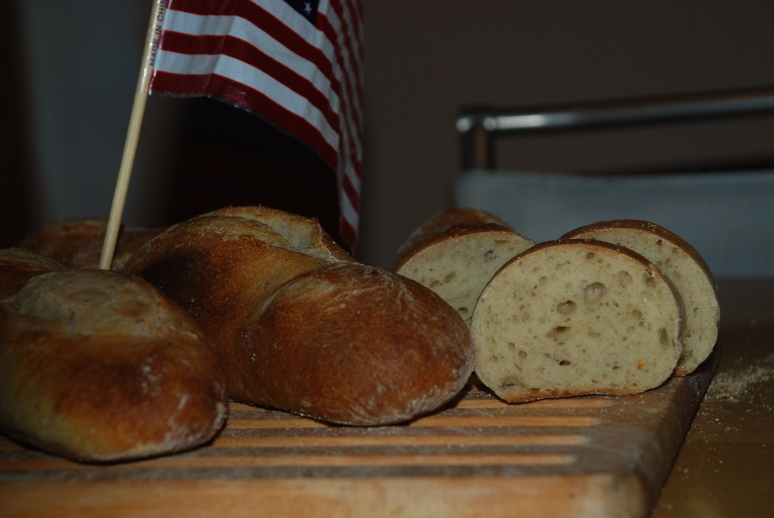Recently I have been experimenting with making sourdough multigrain breads. My first attempt had 50% bread flour, 25% spelt, and 25% rye. Suffice it to say, I hope our friendly neighborhood coyote didn't break a tooth on it. Yesterday, I went down to 6% spelt, 6% rye. This wasn't bad. Today, I went down even further and made baguettes with 3% rye, 3% spelt. This was downright tasty. Here they are with a flag in honor of Patriot's Day.

and with the remnants of the 12%er.

470 g Bread Flour, 17 g Rye, 15 g Spelt, 250 g white starter around 75% hydration, 312 g water, 1 T salt.
Start feeding active white wild yeast starter afternoon before, with at least two feedings, maintaining 75% hydration. Leave on counter overnight. Mix all ingredients but salt and autolyse for 30 minutes. Mix in salt. During bulk ferment, stretch and fold every 45 minutes twice. Leave for 45 more minutes. Cut in three pieces (could have done two, these were short) preshape and let rest for 15 minutes. Shape. Final ferment until done (I really don't know the right amount but I did 40 minutes.) Bake at 475 for 23 minutes.